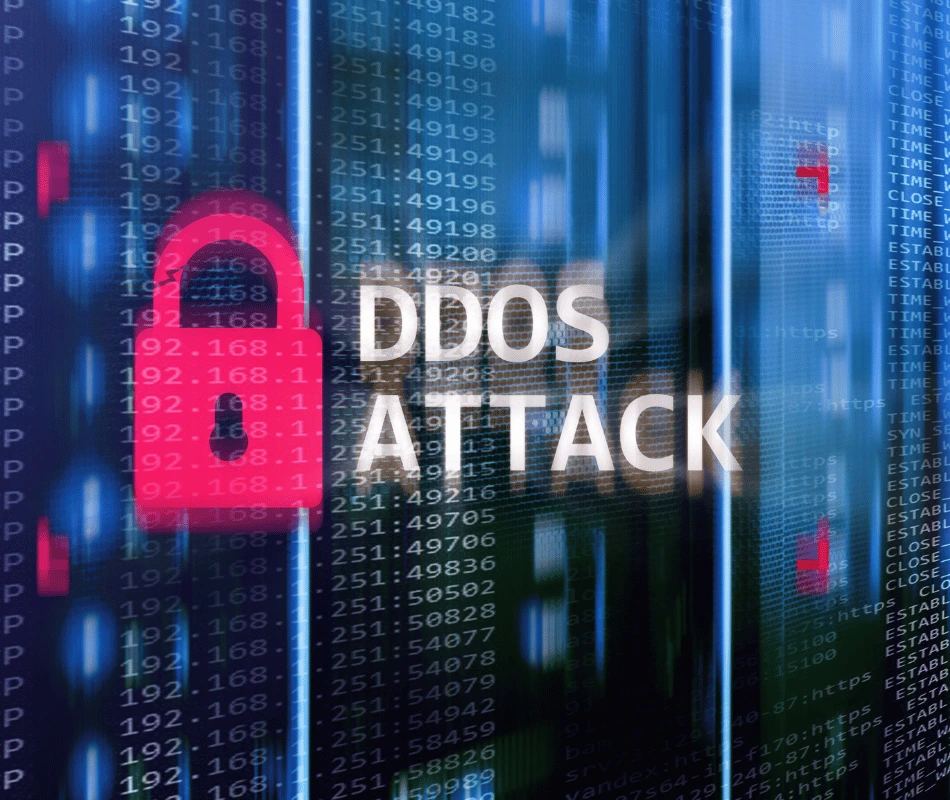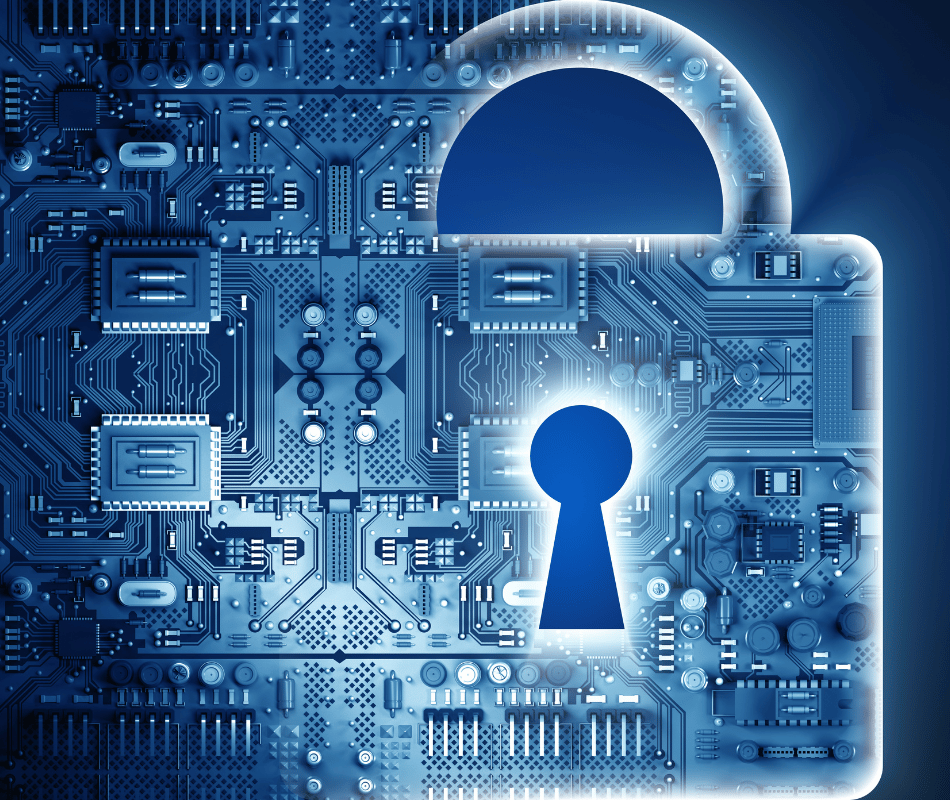
To be a cybersecurity expert, it is never enough to be aware of the practical aspect of cybersecurity, you must also have experience in cybersecurity terms.
Speaking in cybersecurity can be beneficial in practice. Especially for customers you’re dealing with, it can be comfortable for them. And it can bring experience and efficiency to your cybersecurity business.
Therefore, We will summarize the most important cybersecurity terms that it is essential to be aware of in this area.
The most important terms of cybersecurity
Authentication in cybersecurity
One of the first cybersecurity terms you should know. It is the process of renewing the user’s identity and confirming his access to the security level that the system authorizes.
This is done either by using binary (username/password), using a fingerprint or retina check, or through various authentication programs.
Botnet
This term combines the words “Bot”, which means robot, and the word “Net”, which means network.
Robots here form a network of virus-infected computers, that work continuously to form security violations. These attacks include Bitcoin mining, random emails, and DDoS attacks.
Data breach of cybersecurity terms
A term we have to consider when a person hacks into a system accesses the data, detects it, and controls the network. The data that the hacker tries to access are usually critical. So, the data can be something like credit card numbers, bank account numbers, social security numbers, etc.
DDoS (Distributed Denial of Service)
It is a type of interception attack that gets the system out of service. It also stops it completely by flooding it with service request messages.
Attackers select a specific website, and through many hosts and users, hackers send thousands of messages to this website, causing temporary system closing.
Domain
It is a series of computers, with related peripheral devices (printers, scanners…). These devices are fully connected. So that they constitute a single entity.
Encryption
Encryption operations are used to protect information from hackers. And protect against eavesdropping, and the stealing of the information. Or even change content for sent messages.
Exploit
It is a method of cyberattacking the computer system. This is either by a series of orders, by malware, or by a part of the infected data. The attacker uses this software or infected data to damage the victim’s computer.
Firewall
It is a way to prevent malware and attackers from accessing your system. They are either solid gear (used for large companies and enterprises). Or it can be through different programs such as antiviral software.
Hacker, Black Hat
We also call him an immoral hacker. and he is any intruder who attempts to illegally and authorially access a system. To damage or steal information.
The motives for these acts also vary between amusement, theft, and harm…
Hacker, White Hat
We also call him a moral hacker. They are a group of people who have a certificate in cybersecurity. They are employed by large companies and institutions to test the weaknesses of their systems.
These persons make a legitimate attempt to breach the enterprise’s or company’s system at the company’s request.
As a result, they discover the weaknesses that an unethical hacker can exploit for illegal access to this institution’s system and data.
Malware
This term in cybersecurity refers to a range of software that hackers use to damage a system.
One of the most important software is ransomware, mobile viruses, Trojans, and… These malware are delivered to the victim’s system by various means, most notably spam.
Man in the Middle Attack
One of the biggest cybersecurity challenges. Here, the attacker breaks down the encryption used to send data between two parties. Then he acquires the data sent.
Phishing
is a form of disavowal and fraud in which the attacker claims to be a legitimate company or institution to deceive the victim into giving them personal and sensitive information.
Ransomware
One form of malware that hijacks your system and encrypts your files makes it blackmails you until you send money to edit the account and information.
Spoofing
It occurs when a hacker changes the IP address of an email so that it appears to be from a reliable source.
Spyware that threatens cybersecurity
One form of malware that attackers use to spy on you and your computer activities.
If a mobile device like a smartphone is infected with spyware, the hacker can read your text messages, redirect your phone calls, and even track where you are physically
Virus
A type of malware that changes or corrupts information to damage the system.
It then moves to other systems by harmless means such as emails to infect other devices.
Virtual Private Network VPN
It is a way to connect devices in an encrypted network format. While replacing each user’s IP address with a uniform IP address for the VPN.
This process serves to conceal users’ identity online, making the process of attacking harder.
Worm
A type of malware that can reproduce itself and reproduce to deploy itself into new devices. This software can slow down the system, sabotage operations, and steal data.
Cloud
It is a feature you already use in case you use email or Google Drive to store data.
The cloud feature keeps the Data in a secure place online with access at any time.
Cloud service providers examples are Microsoft Azure, AWS, and Google Cloud. These services offer on-demand, cost-effective, and low-risk security services.
Read more: What is Cloud Computing?
Software in cybersecurity
A set of applications that guide the computer to carry out a particular task, where users can download and use a package containing these instructions.
IP Address
Universal IP stands for Internet Protocol.
IP address is a series of numbers dedicated to PC routers servers and almost anything connected to the Internet, including websites. It works very similar to the standard address, allowing users to find any system or device on the web by locating it.
Rootkit
It is a set of programs or tools that allow attackers to access a remote system and control this system’s operations.
The majority of hidden roots either take advantage of the system for additional network safety attacks or open a back door to targeted systems. This is to introduce malware, viruses, and ransomware into your device.
rootkit is usually installed without the victim’s knowledge via a stolen password or by taking advantage of system defects.
BYOD (Bring Your Device)
is one of the company’s procedures that allows employees and users to access a certain level of network data to encourage the network.
It also obliges them to use their devices, such as laptops, tablets, and smartphones, for work-related activities.
Pen-testing
Ways to test the security system of the enterprise or company.
Environments with security infrastructure in information security (only hardware) should use this advanced type of security assessment with a mature security infrastructure. This is because penetration tests can disrupt operations and damage systems. After all, they use the same equipment, procedures, and methodology as attackers.
Social Engineering
Instead of using different hacking techniques, the attacker uses social engineering to access restricted resources.
The attacker sends a fake email to an employee of a particular organization telling him that he needs the organization’s personal information. Here the victim sends the information to discover that he sent it to the wrong person.
In this type of attack, the attacker uses an email that looks like the boss’s email.
Clickjacking
This process drags the victim to click on an object on a particular web page.
The attacker uses this click to broadcast malware in the victim’s device or enable access to victim-sensitive information resulting in the theft of this information, including money and personal data.
Deepfake
A piece of audio or video that has been modified and changed to make it look original or reliable. The most dangerous aspect of the proliferation of deepfake technology is that it can easily convince individuals to believe a particular story or idea. This can lead to user behavior that has a greater impact on society as a whole. as in the political or financial spheres.
Multi-Factor Authentication
(MFA), also referred to as binary authentication, makes it difficult for hackers to access your account by requiring you to provide different credentials.
MFA requires a second factor to confirm your identity. As well as your username and password, such as a one-time protection code, fingerprint check, or face recognition check.
An example is the binary authentication offered by Facebook.
Read more: Authentication and digital identity protection
User Authentication
One of the most important terms of cybersecurity is security and preservation of information. It is a technology that prevents unauthorized users from reaching a certain level of information. Also, it determines which users can reach every level. That means distributing the different levels of system security to The users. So that each category has the right to access a certain level of security, according to their location or specialization.
Antivirus
The latest virus detection technologies are integrated into antivirus systems. It aims to protect users from viruses, spyware, trojans, and worms that can damage computers through email or web browsing.
Trojan
The computer worm is one of the most important terms of cybersecurity is another form of malware. It allows the attacker to enter the victim’s device from the back door and in an invisible way. That allows him to control your computer.
Ethical Hacking
One of the strategies used to serve cybersecurity. After taking the owner’s permission, the ethical attacker takes action to penetrate the network and this process aims to detect weaknesses in the network.
Cyber Attack
Any attempt aimed at breaching security limits. This type of attack may be intended to gather intelligence. In addition, it disrupts the company’s operations, exploits weaknesses, tracks targets, stops work, or obtains value.
The attack may also aim to damage logical or material assets or to utilize the system’s resources to enable attacks against other targets.
Network
More than a computer connected to form an integrated network, the goal of this communication mechanism is to share resources.
Network connections to their computers can be made by cable. It can also be done via telephone lines, radio waves, satellites, or infrared lasers.
Internet of Things
The Shortcut “IoT” refers to common Internet-related elements capable of collecting and transmitting data independently without human input.
Anything physical that can be given an IP address and transfer data is part of the IoT. It also includes traditional computers, vehicles, CCTV cameras, household appliances, and even people.


